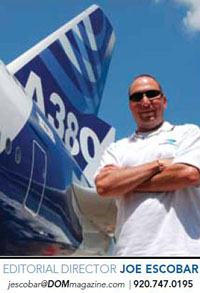
Don’t Drink the Water!

“I don’t drink water. Fish [make love] in it.”
W.C. Fields
Deadlines can have a tendency to sneak up on us. Kind of like Montezuma’s Revenge sneaks up on someone who drinks contaminated water. And speaking of contaminated water and deadlines, David Yuhasz, president and CEO of AeroSafe Products, recently reminded me that the deadline for beginning water sampling and disinfecting for compliance with the Environmental Protection Agency (EPA) Airline Drinking Water Rule (ADWR) is October 19. AeroSafe Products distributes Purogene, a disinfectant for airline potable water systems.
So some of you not in the airline world may be asking, “What is the EPA’s ADWR?”
In 2009 the EPA passed the AWDR to “ensure that safe and reliable drinking water is provided to aircraft passengers and crew. This entails providing air carriers with a feasible way to comply with the Safe Drinking Water Act (SDWA) and the national primary drinking water regulations (NPDWRs). The existing NPDWRs were designed for traditional, stationary public water systems, not mobile aircraft water systems that are operationally very different.”
The EPA says that in 2004 it found all aircraft water systems to be out of compliance with the NPDWRs. Air carriers said it was not feasible for them to comply with all of the monitoring that was required in the existing regulations. Subsequently, the EPA tested 327 aircraft of which 15 percent tested positive for total coliform.
I guess before I go on I should talk a little bit about total coliform. The EPA tells us that coliforms are a group of closely related bacteria most of which are natural and common inhabitants of the soil and ambient waters (such as lakes and rivers) and in the digestive tracts of humans and other warm-blooded animals. The presence of total coliform, in and of itself, does not indicate a health risk. Coliform bacteria will not likely cause illness. However, the presence of coliform bacteria in drinking water indicates that other disease-causing organisms (pathogens) may be present in the water system. One of those is E. coli is a subgroup of the fecal coliform group. It is found in great quantities in the intestines of people and warm-blooded animals. If total coliform is present in a drinking water sample, EPA requires that it also be tested for E. coli.
The EPA says that most E. coli are harmless. Some strains, however, may cause illness — diarrhea, cramps, nausea, headaches, or other symptoms. The presence of E. coli or fecal coliform in a drinking water sample may indicate human or animal fecal contamination - meaning that pathogens may be present.
OK, enough for the biology lesson. The EPA considered 15 percent testing positive for total coliform was a high percentage of positive samples, and it began a process to tailor the existing regulations for aircraft public water systems. The ADWR was born.
The major requirements of the ADWR are:
• Developing and implementing operations and maintenance plans and coliform sampling plans
• Routine disinfection and flushing based on manufacturer recommendations and routine monitoring.
• Self-inspection of the aircraft water system every five years
• Corrective action in response to sample results or other situations that may be a public health risk
• Public notification in response to situations that may be a public health risk
• Periodic compliance audits by EPA
The first deadline for compliance under ADWR was April 19, 2011, where air carriers needed to comply with various planning and reporting requirements such as developing operations and maintenance plans and reporting aircraft inventory). The next deadline is October 19 for compliance with other rule requirements such as conducting routine disinfection, flushing and monitoring.
So if the ADWR applies to you, you should already have your operations and maintenance plans in place. On October 19 you will begin routine monitoring and disinfecting in accordance with your approved plans.
Even if the ADWR doesn’t apply to you, reviewing it can help you learn more about detecting and avoiding drinking water contamination.
For more information on AWDR, you can visit http://water.epa.gov/lawsregs/rulesregs/sdwa/airlinewater/basic.cfm.
 Thanks for reading!
Thanks for reading!
We welcome your feedback. – Joe
